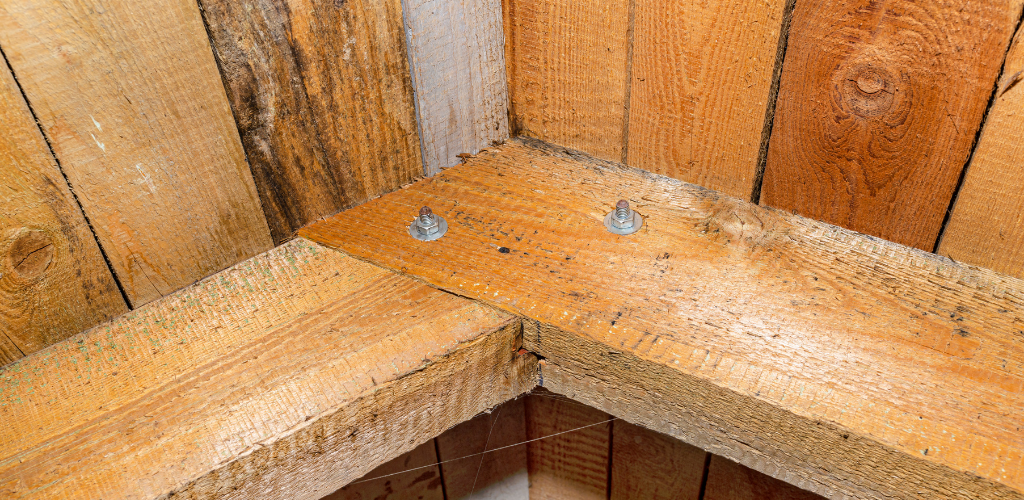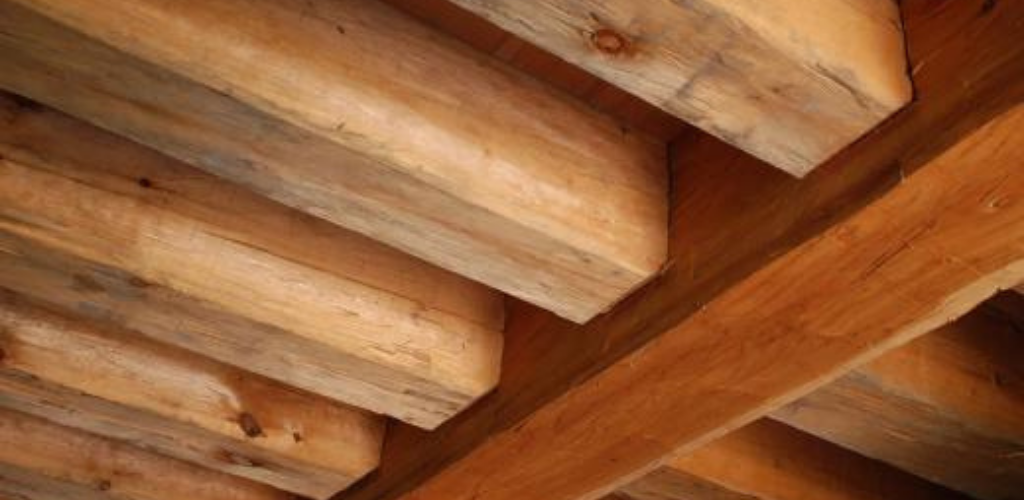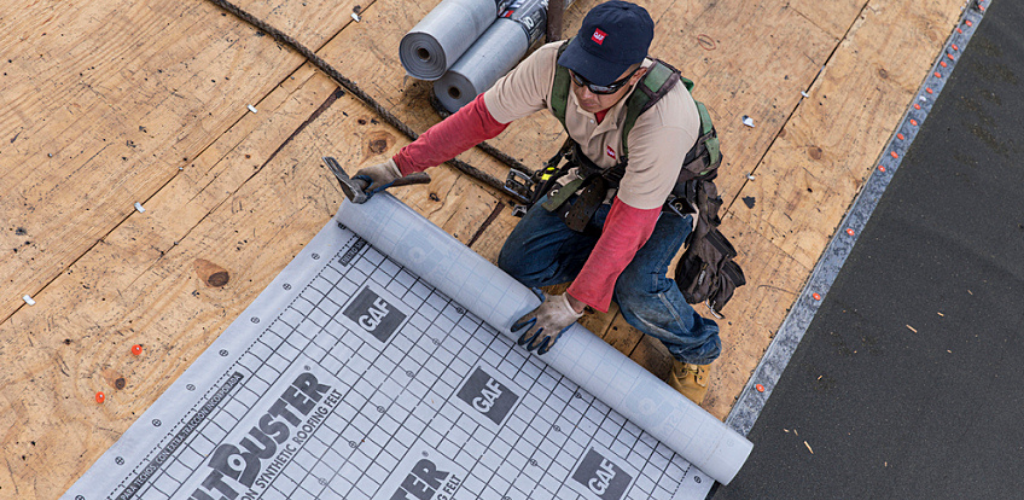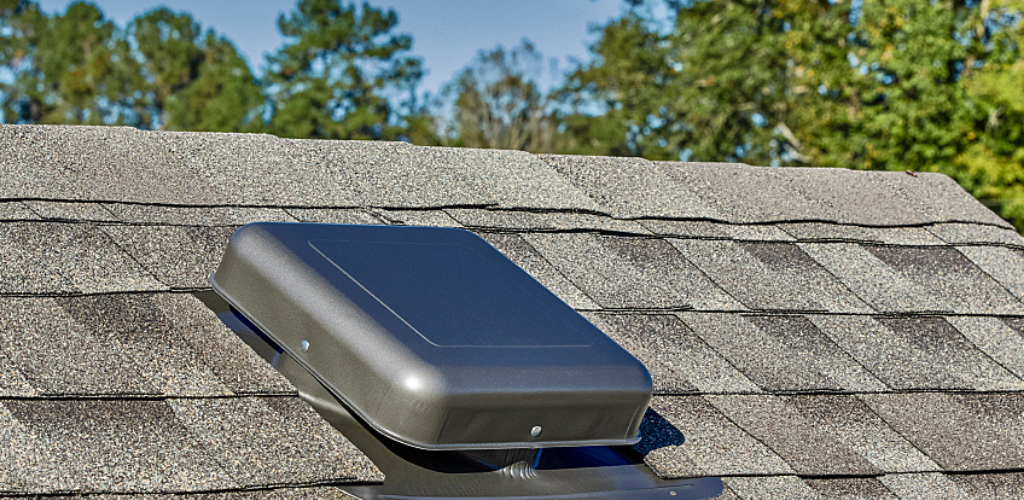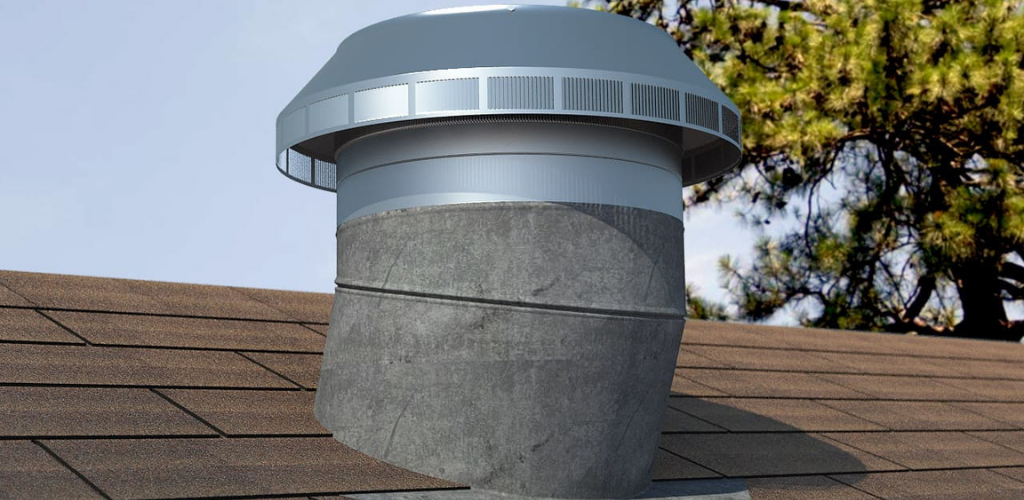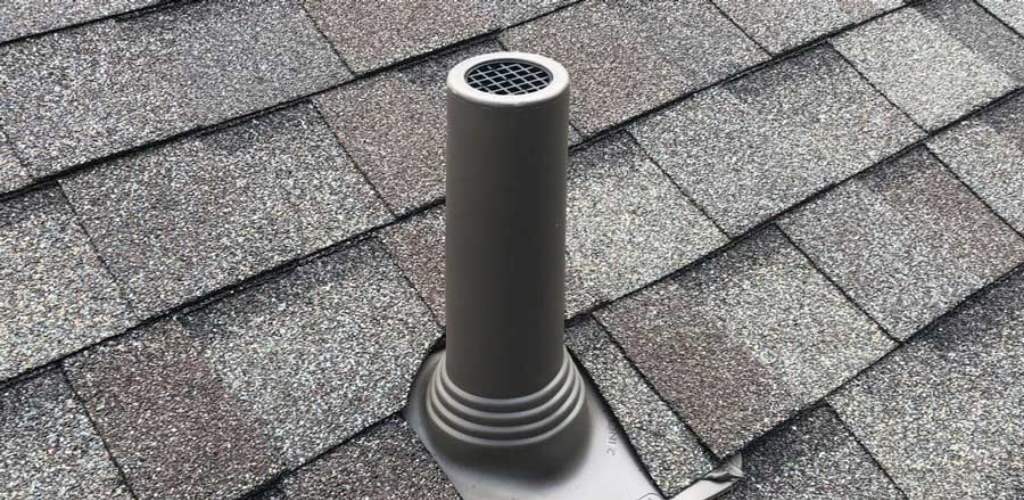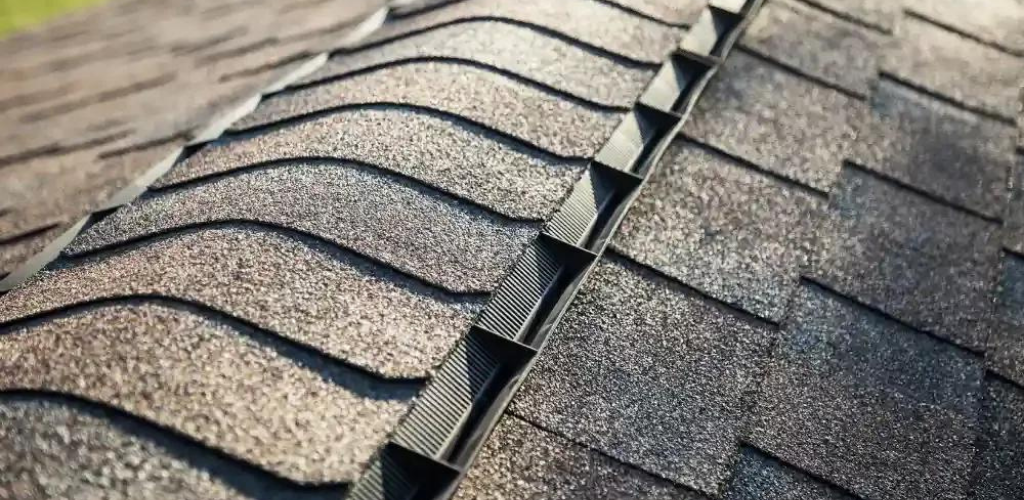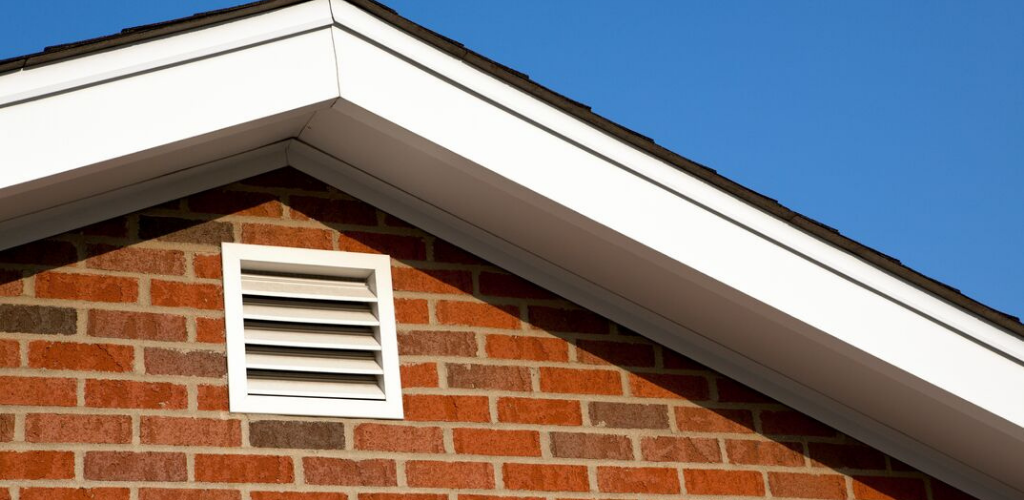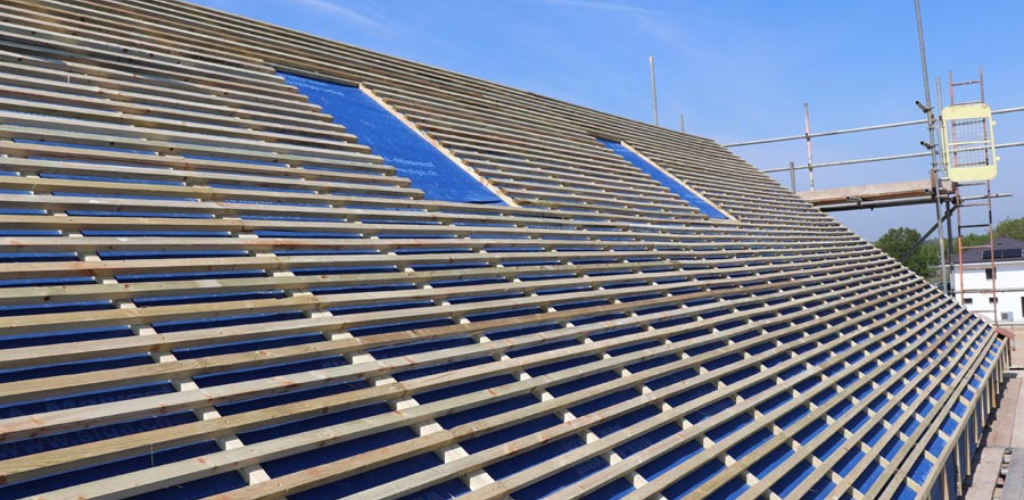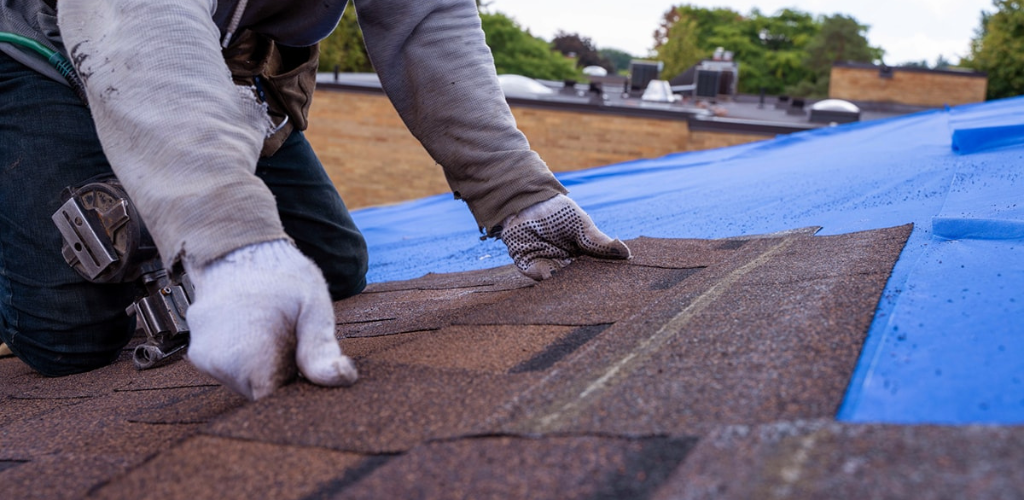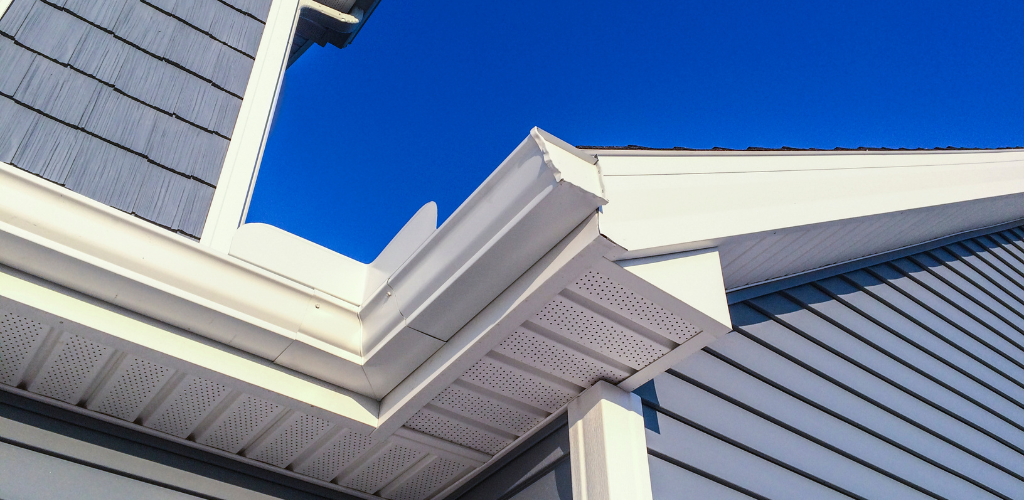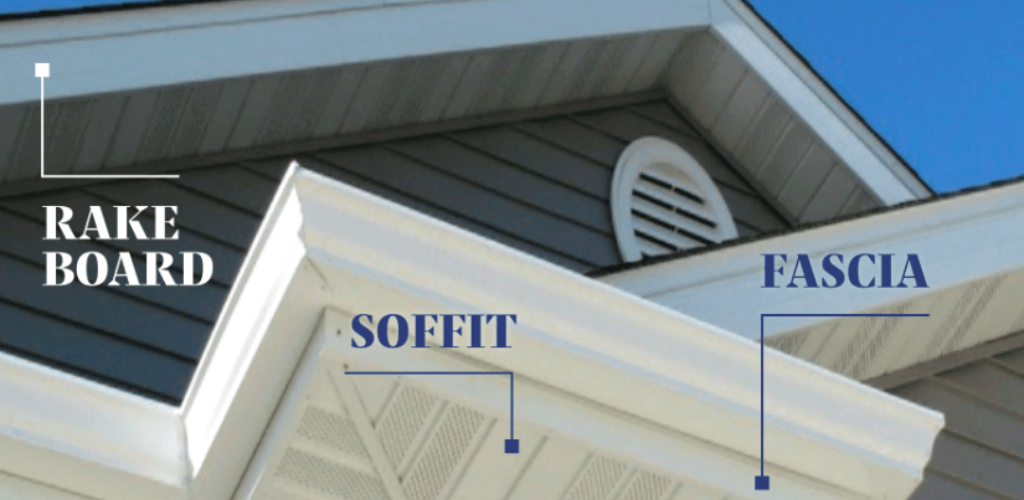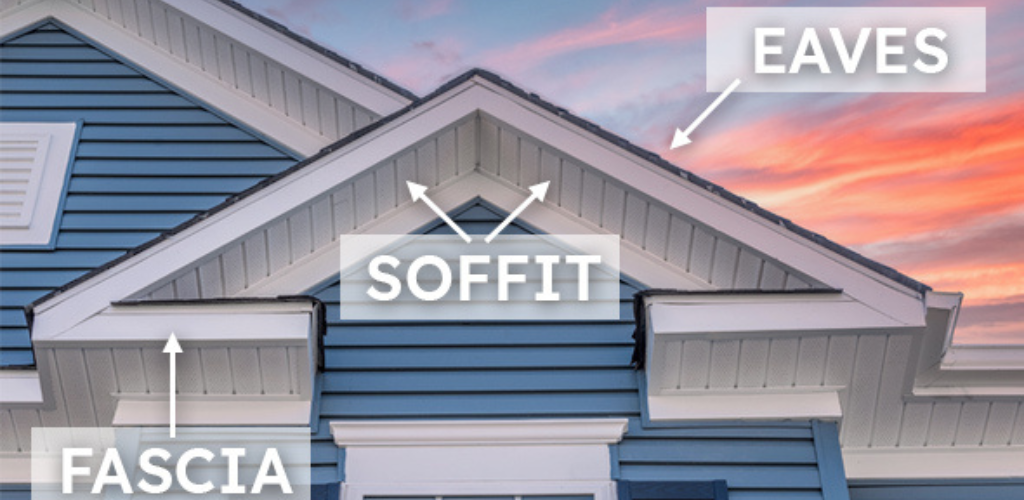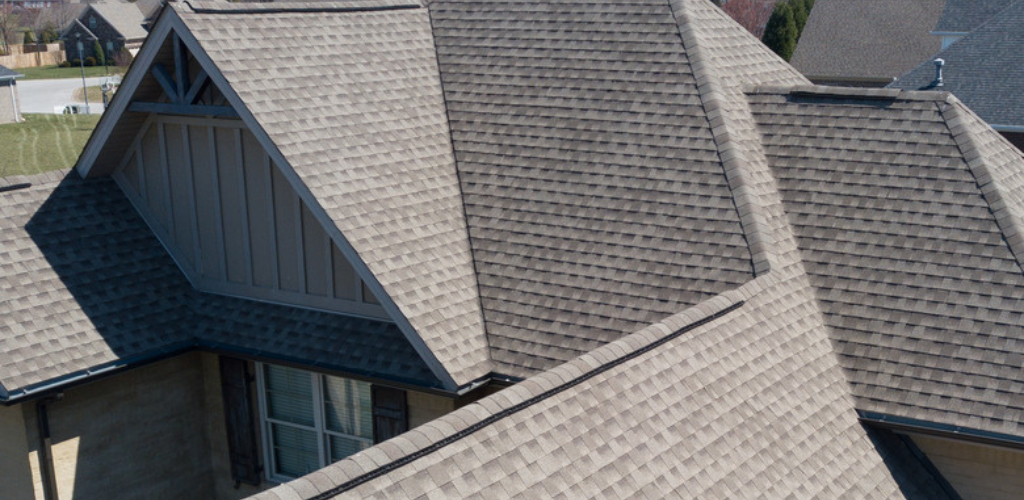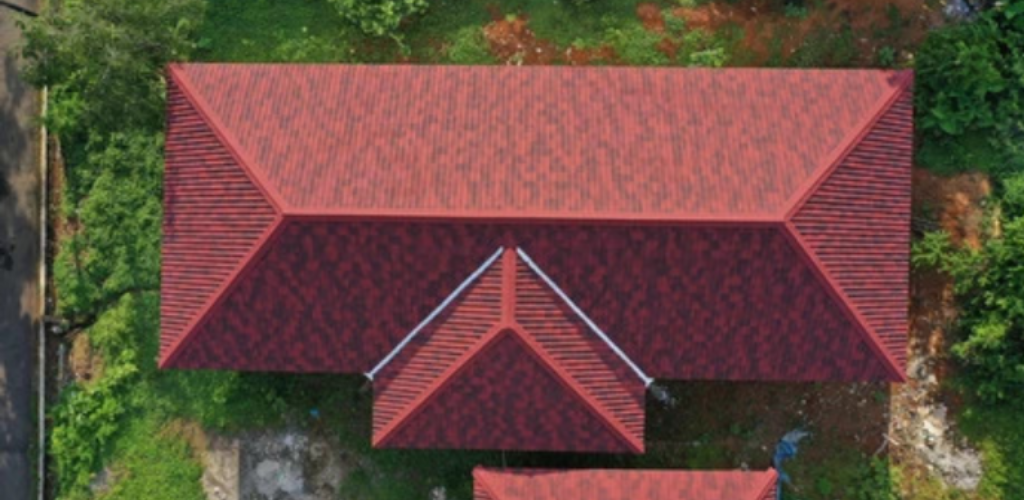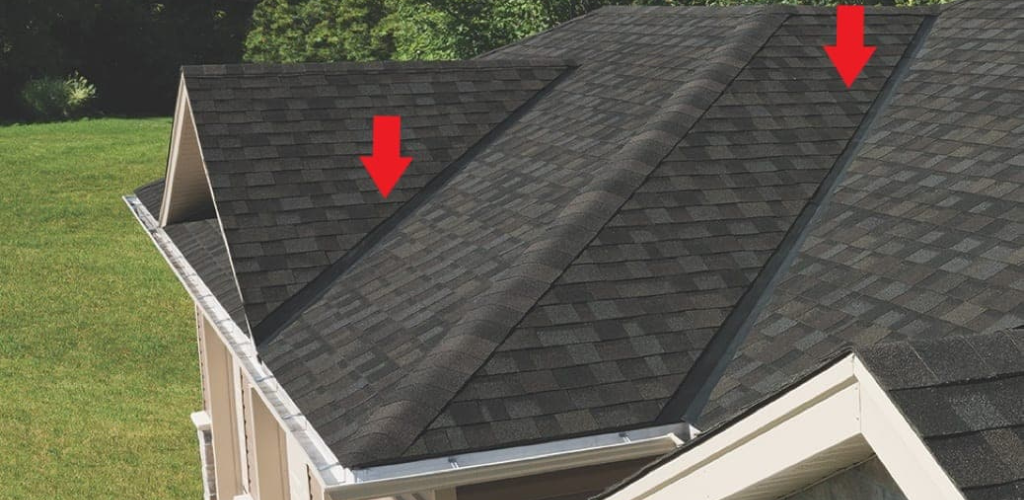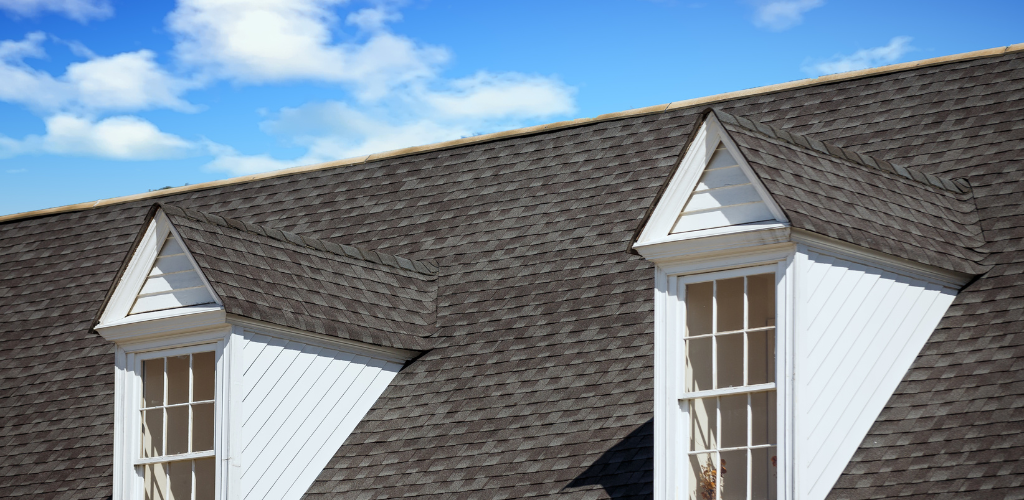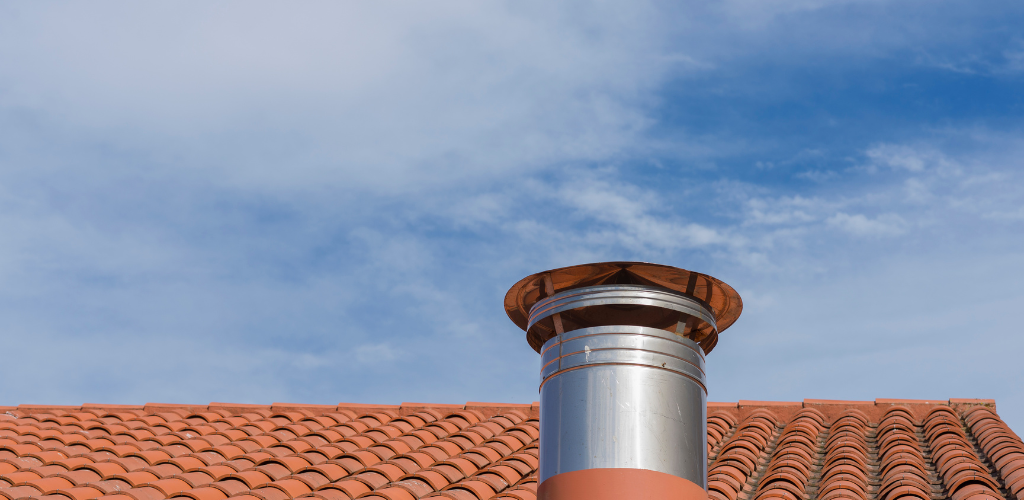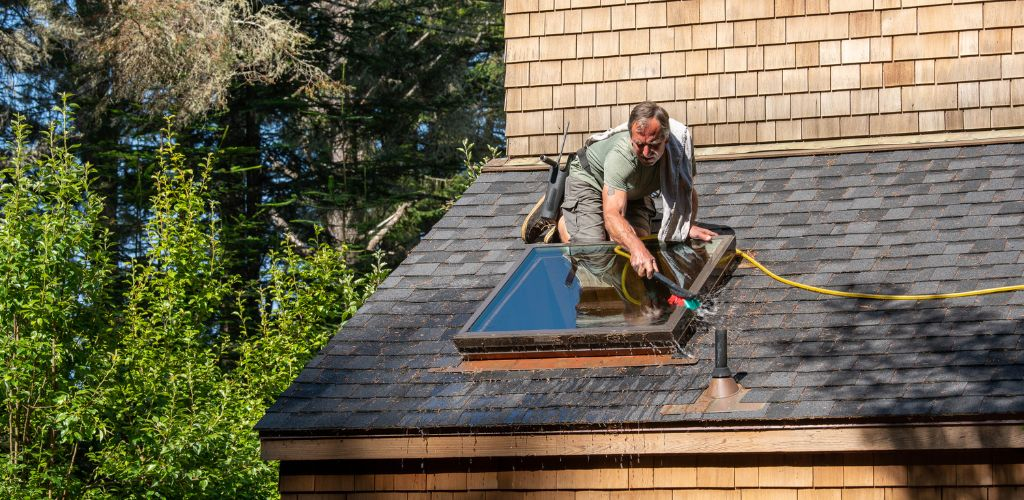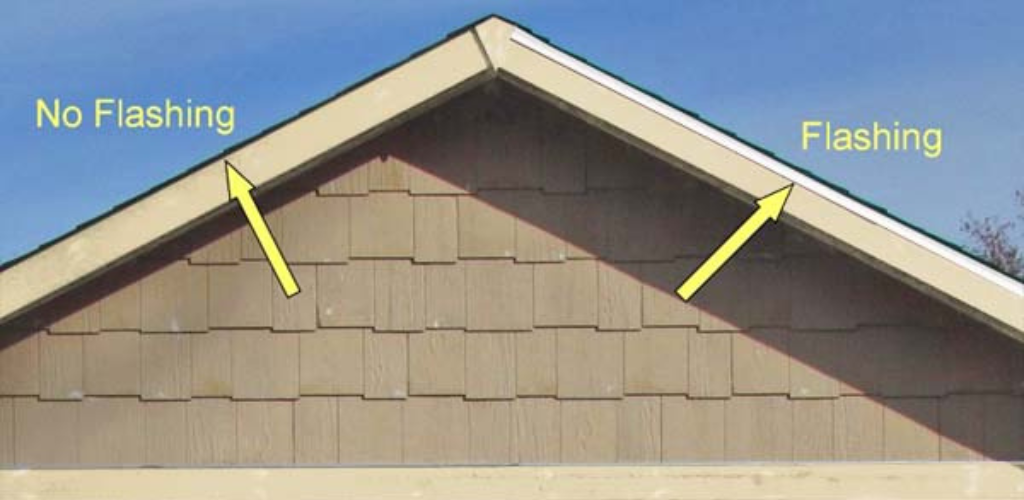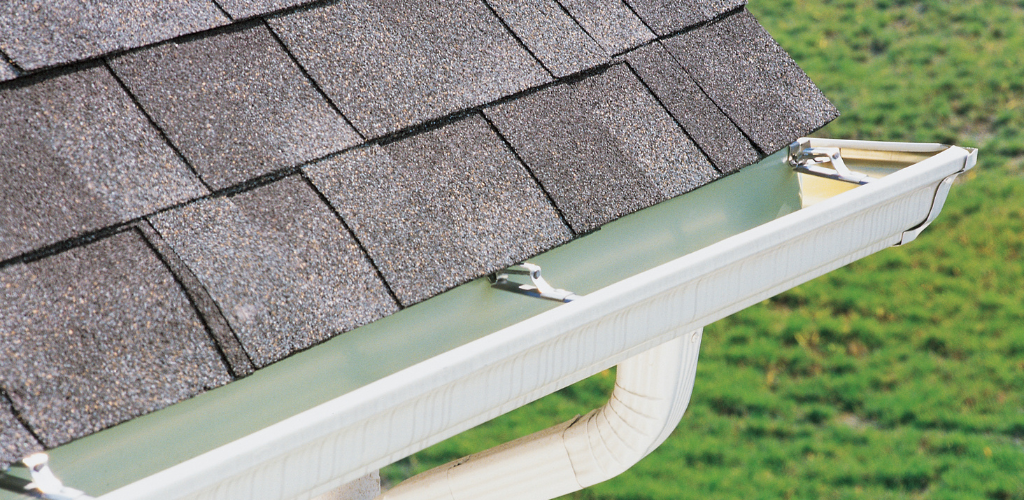Imagine you’re at your house. You gaze up and admire your home’s roof. But have you ever wondered about its components? Let’s get to know the “parts of a roof” a little better. Your roof, protecting you from weather, is made up of 21 key parts. It’s like an orchestra; every part has its unique role. Together, they create harmony to keep your house safe and solid.
Before we get started, it’s important to clarify that this guide is specifically tailored for a residential roofing system, not for commercial ones. The distinguishing factor of residential roofs lies in their pitched roof design, which sets them apart from the commercial or flat roofs you might see on big buildings. This easy-to-read guide will explain the different parts of a residential roof, showing how each one makes your roof stronger, more useful, and more beautiful.
Laying the Groundwork: Trusses, Rafters, and Joists
Trusses and Rafters

Every sturdy building starts with a strong frame. For your roof, these are the trusses and rafters. Trusses are made up of rafters, joists, and purlins, and they create a pre-made frame. This frame gives your roof its shape and also helps it stand up to things like wind or heavy snow. Rafters go from the top of the roof to the edges in a slanted line. They are the main support for the roof and also help give the roof its shape and slant.Joists:

Joists go across your house, connecting the rafters and making the structure stronger. They also make a solid base for the ceiling. This important part of the structure, usually made of wood or steel, helps stabilize the entire roofing system and spread the weight evenly.
Hidden Heroes: Decking & Underlayment
Roof Decking:
Roof Decking, also called roof sheathing, is attached tightly to the trusses or rafters, making a strong and smooth base for your roofing material. Made of plywood or a material called Oriented Strand Board (OSB), this layer not only connects the rafters but also helps stand up to sideways forces. It’s really important for stopping leaks and making the roof last a long time.
Underlayment:

Right on top of the roof decking, the underlayment acts like a barrier against water. It’s more than just a shield against rain, snow, and ice. It also adds another layer of protection against rough weather. You can choose different types of underlayment depending on factors such as your local climate, how steep your roof is, and the kind of roofing material you use.
Inside the Roof: Attic Vents and Collar Beams
Attic Vents:

Attic vents are super important because they help keep your roof strong and lasting. There are different types of roof vents, each popping up through your roof and each needing a waterproof cover called flashing. Here’s the scoop on each type:
• Turbine vents: These are round, spinning vents that use wind power to pull hot air and moisture out of your attic space.
• Plumbing vents: These give fresh air to your home’s plumbing system and need special flashing.

• Soffit vents: You’ll find these under the parts of your roof that stick out past your walls. They work with other vents to bring fresh air into your attic.
• Ridge vents: These sit at the very top of your sloping roof, letting out humid air from your attic.

• Gable end vents: These go at the ends of your roof’s points and give your attic a passive way to get fresh air.

Proper ventilation is really important for the health of your roof, especially in the attic. Roof vents let hot air and moisture out, which helps save energy and stop problems like mold and wood rot. They make sure the air in the attic moves around, keeping the area cool in summer and dry in winter, which makes the roof last longer.Collar Beams:
Collar beams are horizontal parts placed high in the roof between the rafters that face each other. They help stabilize the roof structure by stopping the rafters from spreading and the roof from sagging, making sure the roof is strong and steady.
The Outer Layer: Battens, Asphalt Shingles, and More
Battens:

Battens are long, thin strips of wood or metal attached across the rafters. They make a base for attaching roof shingles or tiles. By making a raised pattern on the roof’s decking, battens help water run off and can make the roof covering last longer by improving wind resistance and regulating roof heat. The spacing of battens is determined by the chosen type of roofing material.Roof Covering:

These are the outer, protective parts of a roof, keeping your home safe from harsh weather conditions. You have a variety of options to choose from, such as asphalt, wood, metal, clay, or concrete, depending on your budget, climate, architectural style, and desired aesthetics. Your decision on the roofing materials is likely to be influenced by factors such as budget, climate, architectural style, and desired aesthetics. It’s important to consider these factors carefully to select roofing materials that not only provide reliable protection but also enhance the overall appearance of your house. For homeowners in US, asphalt shingles remain a popular choice due to their cost-effectiveness and performance.
Parts Sticking Out: Soffit, Fascia, Rake, and Eaves
Soffit:

Soffits are a must-have to complete your roof. These are the boards that cover the bottom part of your roof where it hangs over your house. Hidden under the fascia, soffits give a finished look while helping with ventilation and keeping pests out. They are important for keeping the roof healthy by helping air move in the attic, which prevents heat and moisture from building up.Fascia:
Fascia boards are attached where the roof meets the outer walls of the house, acting as a protective layer and adding a nice touch to the ends of the rafters. Besides making the outside of your home look nicer, fascia boards also provide a place to attach gutters.
Rake:
The rake, a crucial aspect of gable roofs or dormers, is the slanted edge that adds a distinctive touch to your roof. While not technically considered a roof component, the rake defines the sloped edges of a gable roof. Typically located at the ends of your house, this vertical element serves two vital purposes: providing a polished, finished appearance to the roof’s edge and preventing water from infiltrating the walls of your home.
Eaves:

Eaves are like the brim of a hat for your house. They stick out past your walls and help keep rainwater away from your home. Installing gutters on the eaves is highly recommended. Unlike sides of your roof that go straight up and down, eaves run in horizontal line, which helps with direct water drainage. This design also helps prevent the formation of ice dams.
Shapes on Top: Ridge, Hip, and Valley
Ridge:

The ridge is the highest point of your roof, where two parts of the roof meet. Besides connecting the rafters for extra support, the ridge is a good place for vents that can help make the attic more energy efficient.Hip:

The intersection where two sides of the roof meet is called the hip, which needs proper sealing to avoid leaks. A hip roof design has all four sides of roof slope downward toward the walls, creating eaves on all sides. On the other hand, a gable roof has two sides that slope down towards the walls. This design is especially useful in areas with heavy rain, snow, or ice as it provides better protection for the house.
Valley:

Roof valleys are the V-shaped angles created where two roof sections meet. These spots can collect water and junk, so they’re considered weak points on the roof. You need to place gutters here to help direct water off the roof. Cleaning roof valley regularly and installing something called “valley flashing” can help prevent leaks and other water damage, helping your roof stay in good shape for a longer time.
Decorative Parts: Dormer, Chimney, Skylights
Dormer:

Dormer windows rise from the roof, enhancing the design, boosting attic ventilation, creating additional space, and letting in more sunlight. However, they can also let in water if they are not sealed and flashed properly.
Chimney:

Your chimney is more than just a tube for smoke—it’s a key part of your roof. It’s a hollow, upright part of the roof that helps your home breathe by letting out smoke from things like your fireplace, stove, or heater. It’s important to properly install waterproofing material around your chimney to prevent water infiltration.
Skylights:

Skylights are windows on the roof that let in natural light, making your home more beautiful and energy efficient. Like all roof parts, skylights need to be installed, sealed, and maintained correctly to stop water leaks and keep the roof strong.
The Final Touches: Flashing, Drip Edge, Gutters, and Downspouts
Flashing:

Flashing is made of thin waterproof materials like metal, plastic or galvanized steel and acts like a raincoat for your roof. You’ll find it placed around potential leak spots such as the chimney, vent pipes, roof valleys, and skylights. There are different types of flashing for each spot:
• Chimney Flashing: This is positioned where the chimney connects with the roof, providing a barrier to prevent water intrusion.• Vent Pipe Flashing: It acts as an outdoor sealant for vent openings, safeguarding your roof from leaks.• Valley Flashing: This waterproof shield is placed along the grooves between your roof’s slopes to protect against water seepage.• Skylight Flashing: This protective layer sits atop the seals of your skylight, sandwiched between the glass and the roof frame, enhancing your skylight’s waterproofing.
Drip Edge:
The drip edge, also known as “the drip,” is a specialized metal flashing installed along the eaves or rakes of your roof. During rainfall, it prevents water from flowing down the shingles and onto the wooden areas of your house. This not only protects the roof but also stops the siding and foundation of your home from getting damaged.Gutters and Downspouts:

These are the drain for your roof, collecting and guiding rainwater and melted snow away from your home’s foundation. To make sure they work well, you need to clean, check, and repair your gutters and downspouts regularly.
Why is Understanding Roofing Terminology Important?

Understanding the different parts of your roof and the associated terminology provides you with crucial insights that influence your decisions about your roof’s care and maintenance. Here’s why:
It eases communication with professionals: When you understand the lingo, discussions with a roofing contractor become smoother and more efficient, resulting in better outcomes.
It enables informed decision-making: Knowing the function of roofing components helps you understand repair estimates and determine the best course of action when it comes to maintenance or roof replacement.
It minimizes misunderstandings: Fluency in roofing terminology ensures that you and your contractor are on the same page, avoiding confusion over contracts or proposals.
It aids preventive maintenance: By identifying potential issues early, you can prevent small problems from escalating into costly repairs, extending the longevity of your roof.
It empowers you to be a proactive homeowner, giving you the knowledge to make informed decisions about your roof.
Need a Roofing Expert? We Can Help!
At ReNew Roofing, we’re all about making your roofing experience simple and transparent. With over 60 years of combined experience and more than 3000 new roof installations, we know our way around every part of a rooftop.
Be it small roof repairs or a total roof replacement, our customers always become well educated in the roofing industry after partnering with us. Want a free inspection of your whole roof system? Just give us a call today!



![Parts of a Roof: 21 Key Roof Components [Picture Guide]](https://ebqb9o3iucq.exactdn.com/wp-content/uploads/2023/06/91beffb7-c0be-42b1-903e-fa4da86d1e06.jpg?lossy=1&ssl=1)
